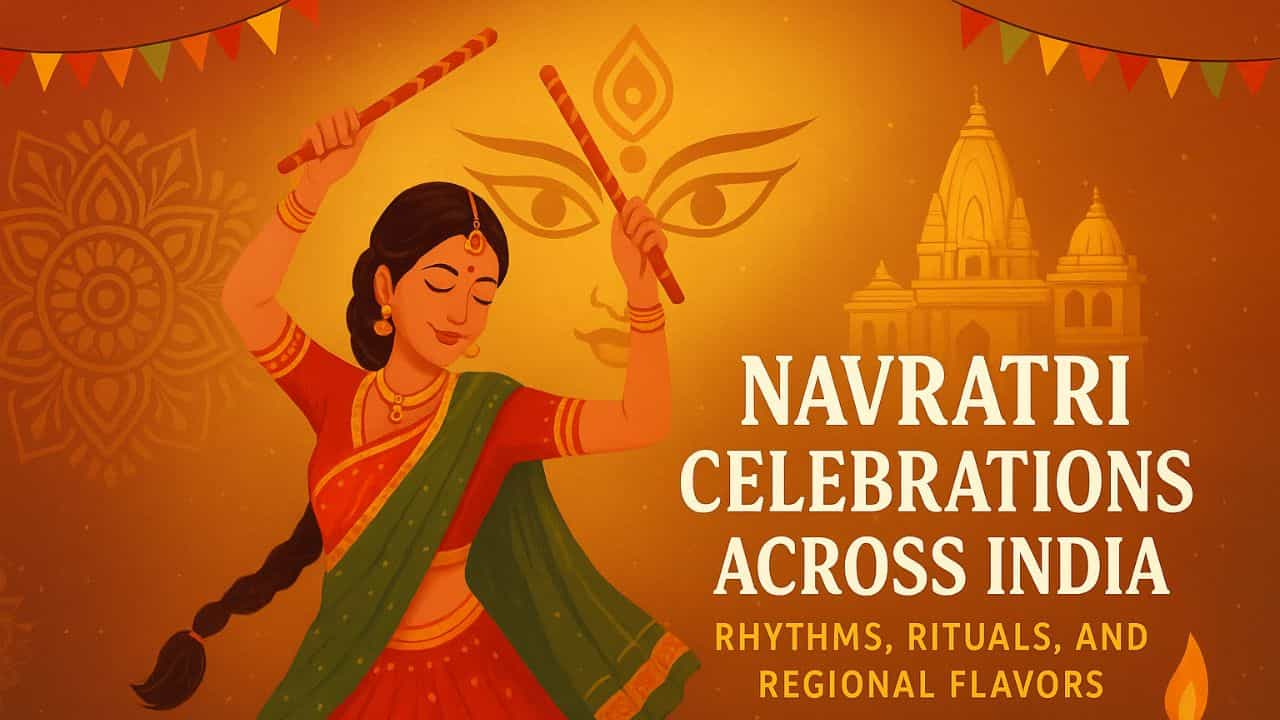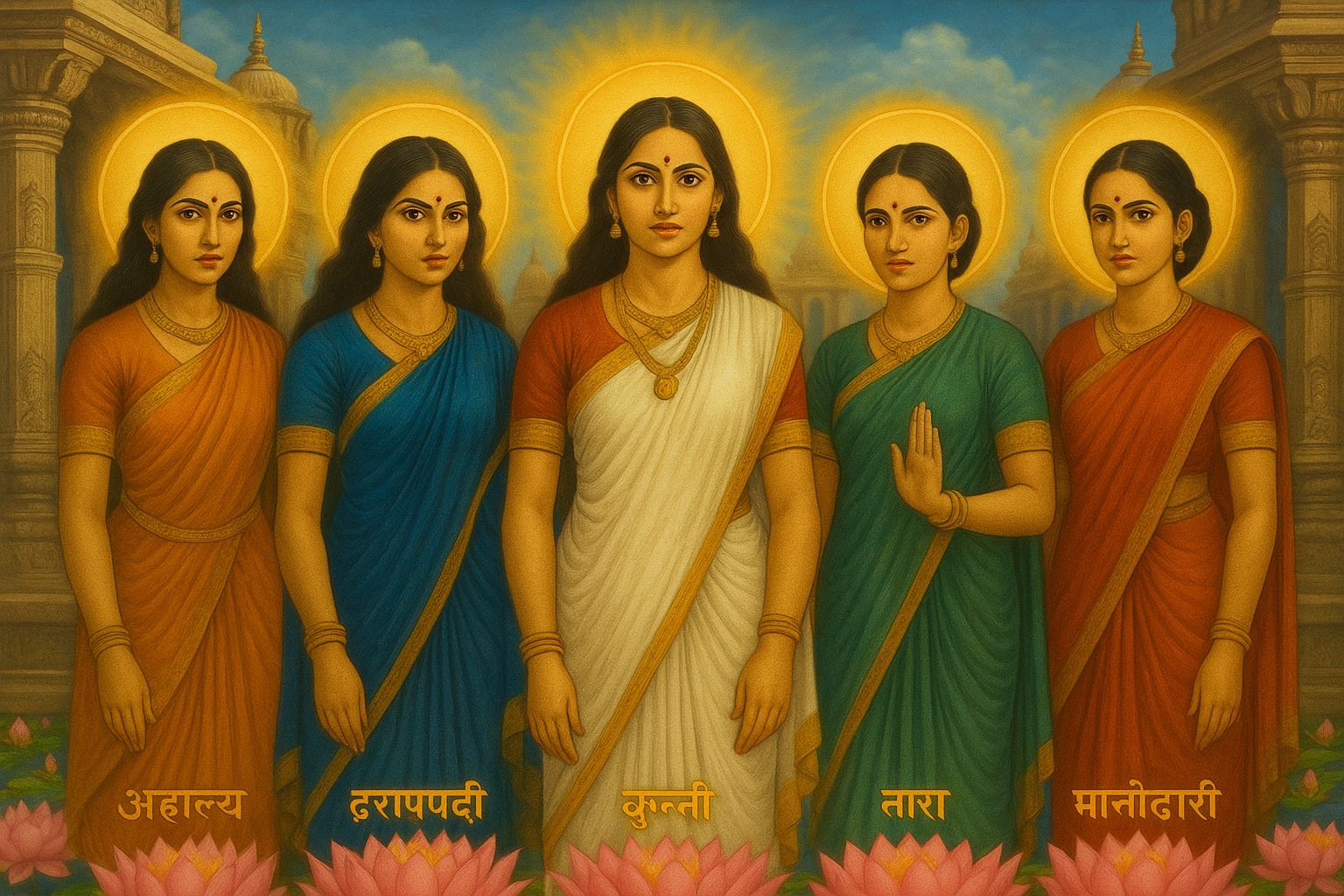
Navratri, the nine-night festival honoring the Divine Feminine, unfolds across India as a tapestry of rituals, music, art, and food. Although many people associate Navratri with Garba and Dandiya alone, celebrations across India include an astonishing diversity of practices: public pandals, intimate household displays, community dances, and pilgrimage traditions.
The word Navratri literally means “nine nights.” In Hindu spirituality, these nights are dedicated to various forms of the goddess: Durga, Lakshmi, and Saraswati, representing power, prosperity, and wisdom. Stories linked to Navratri vary by region: some celebrate Durga’s victory over Mahishasura, others the goddess’s role in seasonal renewal. These narratives explain why Navratri celebrations across India are at once devotional and communal; the festival unites worship with artistic expression.
What Each Night Signifies
Different communities across India observe Navratri with varying practices, but a widely followed tradition is the nine-day celebration that honors distinct aspects of the goddess. This design is rich in symbolism and depicts the multifaceted essence of the divine feminine.
The celebration kicks off with the first three days dedicated to Durga, the fierce warrior goddess who embodies strength and protection. During this period, rituals are centered around invoking her power to uphold righteousness and vanquish evil forces. Devotees actively participate in prayers, make offerings, and take part in cultural performances that showcase her bravery and resilience in the face of challenges.
The next three days will focus on themes related to fertility, prosperity, and household well-being. This time is believed to be especially connected with Goddess Lakshmi, who is seen as the bringer of wealth, prosperity, and good fortune. Celebrations typically involve lighting lamps, preparing special meals, and performing rituals to welcome prosperity into our homes. It’s a time when families come together to show gratitude for their blessings and seek the goddess’s favor for continued abundance.
The last three days are spent worshipping Saraswati, the goddess of knowledge, music, and the arts. This is particularly significant in southern India, where her blessings are sought for wisdom and creative pursuits. Activities during this period often include music, dance, and scholarly activities, emphasizing the importance of education and the arts in everyday life.
Gujarat: Garba and Dandiya - Dance As Devotion
For the Gujaratis, Navratri is all about joy, music, and dance! Picture this: every night, lively grounds and community halls come alive as friends and families gather to participate in Garba and Dandiya Raas. In Garba, everyone forms a circle, clapping and twirling to the infectious beat of traditional music, while Dandiya introduces a fun energy with dancers playfully striking colorful sticks together.
The atmosphere is electric, and it’s impossible to resist joining in! People wear stunning chaniya cholis and kediyu, creating a vibrant spectacle that’s not just about the dance; it’s a way of coming together in worship. For many outside India, this lively celebration truly captures the essence of Navratri, blending age-old dance steps with modern twists like DJ nights and community competitions.
West Bengal and Assam: Durga Puja - Pandals, Artistry, and Social Life
Over in West Bengal, the essence of Navratri comes alive during Durga Puja, and it’s an experience you won’t forget! This multi-day festival is famous for its incredible pandals, temporary structures that are beautifully crafted and themed by entire neighborhoods. Imagine walking through these artistic displays, each one telling a different story, and enjoying the lively cultural programs filled with music and dance.
The highlight is the immersion processions, where everyone unites to honor the goddess as she is taken to the river for her final farewell. Durga Puja shows just how much community spirit can flourish during Navratri, blending rich traditions with art and celebration.
South India: Golu, Saraswati Puja, and Household Traditions
In the southern states like Tamil Nadu, Karnataka, and Andhra Pradesh, Navratri takes on a cozy and family-oriented vibe. You’ll find Golu (or Bommai Golu) in southern India, where homes are adorned with stacked dolls and figurines, all of them unique and full of stories. Families invite friends and neighbors to admire their displays, share delicious prasadam (sacred offerings), and chat about the themes represented by the dolls.
On the ninth day, the festivities turn to Saraswati Puja, honoring learning and creativity. It’s a touching moment when families place their books and instruments in front of the goddess for blessings. These traditions reflect the warm and personal side of Navratri, where family bonds grow stronger and cherished cultural memories are created.
Maharashtra and Goa: Folk Dances, Fasts, and Community Rituals
Navratri in Maharashtra combines vibrant folk dances, customary fasting, and emotional singing. Consider colourful gatherings where people come together to dance joyfully, inspired by the music and atmosphere of the festival. In Goa, the celebrations are given a distinctive touch by incorporating Konkani customs.
You might even find a delightful blend of Christian and Hindu rituals in some seaside towns, demonstrating the wonderful diversity of civilisations coming together. This holiday season is all about community, joy, and appreciating local flavours!
Smaller Regions and Hill Stations - Himachal, Odisha, and the Tribals
All around India, in the picturesque hills of Himachal Pradesh and the rich cultural landscape of Odisha, Navratri is celebrated in delightful and unique ways. Here, tribal communities showcase their vibrant traditions through lively masked dances honoring local deities, bringing their heritage to life. In Odisha, you can enjoy classical dance performances and vibrant temple festivals that highlight the region’s artistic talent.
Himachal Pradesh offers festive processions and communal feasts that bring everyone together in celebration. These local practices remind us that while Navratri may look different everywhere, it’s all beautifully rooted in the unique cultures and traditions of each community!
Food, Costume, and Commerce: Navratri’s Sensory Map
Navratri is a season of special foods, fried snacks in Gujarat, sweets and khichdi in parts of North India, and regional delicacies served during Golu visits in the South. Costumes vary from traditional chaniya cholis and dhotis to contemporary designer ensembles.
Economically, Navratri drives demand for textiles, handicrafts, and food vendors, an important aspect of modern Navratri celebrations across India.
Modern Day Navratri Trends: Fusion Events, Women-Led Initiatives, and Sustainability
Recently, many communities have shifted toward eco-friendly pandals, plastic-free garba grounds, and women-led organizing committees. Fusion events, combining classical arts with modern stagecraft, are rising, and social media has amplified regional styles nationally. These innovations are reshaping how people experience Navratri celebrations across India, making the festival accessible while prompting questions about authenticity and commercialization.
From the lively circles of Garba, where friends and families come together to dance happily in colorful outfits, to the beautiful, artistically crafted pandals of Durga Puja, Navratri celebrations across India are a wonderful blend of joy and cultural richness. This festival does an amazing job of embracing local crafts, music, and delicious foods while keeping a strong spiritual essence at its heart.
Whether you’re joining in a fun Dandiya night, admiring a stunning Golu display, or simply soaking in the vibrant atmosphere of a neighborhood puja, Navratri is all about connection: connecting with your community, celebrating cultural traditions, and tapping into the inspiring energy of the Divine Feminine. It’s a time filled with excitement, warmth, and togetherness, inviting everyone to revel in the spirit of festivity and make cherished memories!

